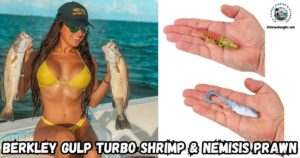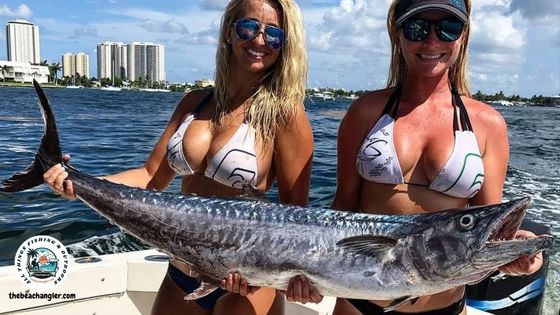Saltwater fish might look like they’re all about swimming and underwater acrobatics, but there’s a lot going on beneath the surface, especially when it comes to their teeth. Each species has a unique mouth arsenal tailored to its dining habits. It’s a fascinating interplay between a diet and how those meals are chomped.
QUICK LOOK – Teeth of Saltwater Fish
A fish’s survival often hinges on how effectively it can capture and process its food. Whether it’s a predator with a mouth full of needles ready to ambush its prey or a grazer with tools designed to munch on plants or shelled creatures, each tooth shape serves a specific function.
- Carnivorous Fish: carnivorous fish are the true predators. They possess an impressive set of chompers designed specifically for the hunt. The sharp, dagger-like teeth of these creatures aren’t just for show; they’re optimized for grabbing and tearing flesh, ensuring nothing gets away once caught.
- Herbivorous Fish: herbivorous species stand out with their unique dental adaptations. Unlike their carnivorous counterparts, these fish don’t need sharp teeth to grab and tear. Instead, their teeth are tailored for scraping, grinding, or crushing, turning them into efficient underwater gardeners.
- Omnivorous Fish: Omnivorous fish are a fascinating group, showcasing a mix of dietary adaptability that’s quite remarkable. With a menu open to both plants and animals, these fish need teeth that can handle a little bit of everything.
Saltwater fish demonstrate the remarkable power of natural selection, with their varying dental structures being a prime example. Each tooth shape and sharpness is not random but a well-designed adaptation, sculpted by the demands of their dietary needs.
Ever noticed fish with long, sharp teeth lurking in the depths and others with flat or fused teeth nibbling on coral? This isn’t coincidence. Their tooth structure tells a compelling story of adaptation and evolutionary strategy. These adaptations aren’t just for show; they’re about finding the best way to eat what’s available in their environment.
The crux of the matter is this: a fish’s survival often hinges on how effectively it can capture and process its food. Whether it’s a predator with a mouth full of needles ready to ambush its prey or a grazer with tools designed to munch on plants or shelled creatures, each tooth shape serves a specific function. This efficiency in hunting and feeding not only ensures survival but also means taking on a role within their ecosystem.
Understanding these adaptations is more than just trivia. It informs conservation efforts and helps researchers predict how fish populations might respond to changing sea conditions. So, the next time you gaze into an aquarium or watch a nature documentary, take a moment to appreciate the incredible engineers that are evolution and adaptation at work in the form of fish teeth.
Carnivorous Fish The Hunters of the Sea
Swimming silently but swiftly through the ocean, carnivorous fish are the true predators. They possess an impressive set of chompers designed specifically for the hunt. The sharp, dagger-like teeth of these creatures aren’t just for show; they’re optimized for grabbing and tearing flesh, ensuring nothing gets away once caught.
Think of a barracuda with its formidable jaws—those sharp teeth help it slice through prey with minimal fuss. Sharks, another predator we often hear about, have teeth that slice and dice with efficiency, capturing soft-bodied fish and other sea creatures with ease. Needlefish, with their needle-sharp teeth, are adapted for a similar purpose, piercing through flesh quickly in a high-speed chase.
What’s fascinating is how these carnivores have evolved to maximize their hunting prowess. Each tooth type is perfect for its purpose: puncture, grip, and tear. This isn’t random experimentation on nature’s part but a finely tuned evolutionary dance, honed over countless generations.
These fish, acting as hunters, play crucial roles in keeping the marine ecosystem balanced. By controlling prey populations, they help maintain the fragile balance that allows a multitude of marine species to thrive. It’s a reminder that sharp teeth, while intimidating, are vital for ecological stability.
So, next time you’re watching a nature show or observing fish in an aquarium, consider the complexity and precision of these toothy adaptations. It’s more than just survival; it’s about beautifully orchestrated interactions that ensure the underwater world stays in harmony.
Herbivorous Fish Or Nature’s Underwater Gardeners
When you think of fish with a penchant for plants, herbivorous species stand out with their unique dental adaptations. Unlike their carnivorous counterparts, these fish don’t need sharp teeth to grab and tear. Instead, their teeth are tailored for scraping, grinding, or crushing, turning them into efficient underwater gardeners.
Take the parrotfish, for instance. It sports a set of strong, fused teeth, a bit like a beak, that allows it to scrape algae right off coral. This not only provides them food but also helps keep coral reefs healthy by controlling algae growth. Sheepshead fish offer another example with their distinctive molar-like teeth, perfect for munching through the hard shells of invertebrates.
These dental adaptations aren’t just clever tricks; they’re perfectly aligned with the dietary habits of these fish. Feeding on plants or shell-covered critters demands a whole different set of tools compared to hunting live prey. Flat or fused teething enables them to break down tough food resources effectively and efficiently.
These herbivores don’t just feed themselves—they play a crucial role in the ecosystem. By maintaining coral reef health and controlling algal populations, they’re vital in prevention against coral overgrowth and ensuring marine biodiversity. It’s a balance that keeps the oceanic world vibrant and diverse.
Observing these fish and their feeding behaviors provides insight into how nature has adapted them over time. So next time you spot a parrotfish nibbling away on coral, appreciate the intricate role its teeth play, not just in feeding, but in sustaining the underwater ecosystem at large.
Omnivorous Fish Are Versatile Feeders
Omnivorous fish are a fascinating group, showcasing a mix of dietary adaptability that’s quite remarkable. With a menu open to both plants and animals, these fish need teeth that can handle a little bit of everything.
The versatility in their diet reflects in their dental configuration. These fish might not have the razor-sharp teeth of carnivores or the grinding power of strict herbivores. Instead, their teeth strike a balance, often featuring a combination of edges suitable for cutting and surfaces for grinding. This allows them to process a variety of food types, making them extremely adaptable to different environments.
Fish like catfish are known for their opportunistic feeding habits; they don’t mind scavenging bits of plant matter and capturing live prey when the occasion calls for it. Then there are tilapia and spadefish, with teeth that can manage both the soft vegetation and the occasional smaller prey. This adaptability is their strength, especially in habitats where food availability can be unpredictable.
For these omnivorous creatures, having the right dental toolkit supports survival across diverse ecosystems. It’s like having a multi-tool in their mouth, ready for whatever the ocean serves up. Such adaptability ensures that they can thrive even when their preferred food sources are scarce, showcasing an impressive evolutionary strategy.
Understanding how these fish adapt through their feeding habits provides insight into how ecosystems function. Omnivores help balance aquatic environments by not limiting themselves to one food source, thus contributing to the health and stability of their habitats.
This multifaceted dietary approach stands as a testament to the resourcefulness of nature. It highlights how evolutionary paths are forged by the need for survival and how adaptability can be the key to stability and success in the wild ocean world.
Evolutionary Adaptations and Natural Selection at Work
Saltwater fish demonstrate the remarkable power of natural selection, with their varying dental structures being a prime example. Each tooth shape and sharpness is not random but a well-designed adaptation, sculpted by the demands of their dietary needs.
- Evolution plays a critical role in this process. Over countless generations, fish that effectively adapted to their food sources were more likely to survive and reproduce. The results of successful adaptations are evident in the mouth of every fish, showing how they’ve evolved to maximize their feeding efficiency. It’s a clear display of evolutionary finesse—a process driven by the need for survival in changing environments.
- Scientific studies support how specific tooth formations have been fine-tuned to optimize feeding. For example, research on predator fish reveals that sharper teeth increase their success rates in hunting, directly impacting their survival rates. On the flip side, herbivores with teeth better suited to grinding or scraping have shown how such features aid in their dietary niches.
- These adaptations also highlight the resilience of marine species. As environmental conditions shift—whether due to climate change, habitat loss, or other factors—fish may continue to evolve, developing new dental adaptations to keep pace with their changing world.
By recognizing these evolutionary paths, we gain insights into the history of our planet’s marine life, understanding not only how species have survived past changes but also how they might continue to adapt to future challenges. It showcases nature’s incredible ability to innovate in response to life’s demands.
Conclusions and The Importance of Dental Diversity in Marine Ecosystems
The variety of tooth structures in saltwater fish underscores a fascinating aspect of marine biodiversity. Each tooth type, honed by evolution, plays an important role in the broader ecosystem.
From sharp-toothed predators to grinding herbivores and omnivores, these dental adaptations help maintain marine balance. Predators regulate prey populations while herbivores play a part in maintaining the health of coral reefs and plant growth.
Understanding these dynamics is vital. As human activities increasingly impact the ocean, insights into these natural adaptations can guide conservation efforts. Preserving diverse ecosystems ensures that these evolutionary stories continue to unfold.
Moreover, this diversity offers a peek into how life in the sea might adapt to future environmental shifts. It’s a reminder of the resilience and adaptability inherent in nature.
The next time you observe these fascinating creatures, consider how their unique tooth adaptations contribute to the dynamic and interconnected world under the sea, highlighting the wonder and complexity of marine life.
Check Out Our Most Recent Articles:
- Berkley Gulp Turbo Shrimp And Nemisis Prawn

- Okuma Makaira Spinning Reel

- Technology For Pre Scouting Fishing Locations

- 6 Advantages of the Okuma Azores Blue Saltwater Spinning Reel

- How Does The 80/20 Rule Apply To Saltwater Fishing

- KastKing Estuary Inshore Saltwater Fishing Rods Are A Practical Choice

As always, stay safe, enjoy the journey and please try to leave it cleaner than you found it. If you have any comments, questions, ideas, or suggestions please leave them in the comment section below and I’ll get back to you ASAP. You can follow us on Facebook: Rex The Beach Angler, Instagram: thebeachangler7, Twitter: @AnglerBeach, and YouTube: Man Art Creations.
P.S. – Thanks so much for checking out our blog, we really appreciate it. Just so you know, we may receive a commission if you click on some of the links that appear on our site. This helps us keep our content free and up-to-date for everyone. We appreciate your support!

A life long surf fisherman with 50+ years of experience, I am also an avid hunter and outdoorsman. I will be sharing my passion for the outdoors with you so be prepared for hunting, fishing, camping, hiking and more. Along with gear reviews and the latest trends and innovations in the outdoor industry.



